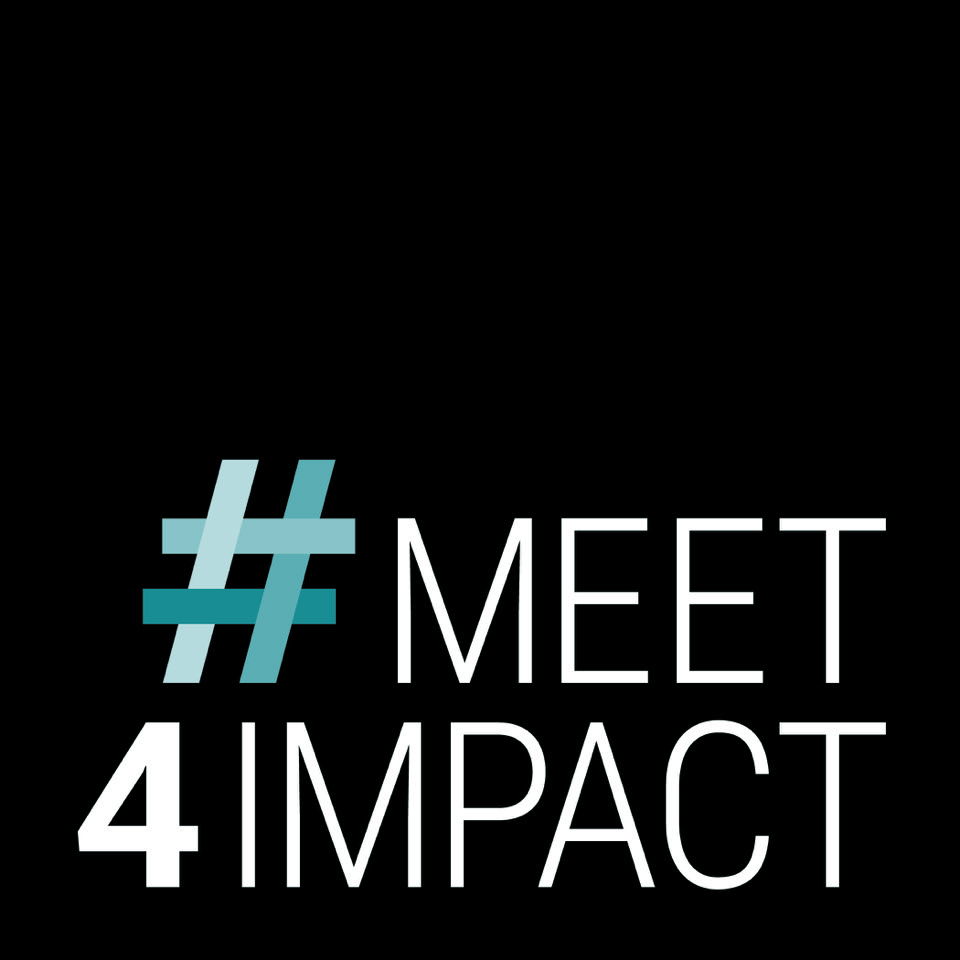In this third installment of our #MEET4IMPACT series, founder Geneviève Leclerc explores the first – out of four – key step needed to achieve a successful impact practice. As a purpose organisation, your association is likely constantly seeking to “make a difference” and create broader value for all of your stakeholders. But where to start? And who can we look up to for an example?
As not-for-profit organisations, associations already generate impact through their activities. But most do not properly understand the impact that they do have, and they are challenged in scaling their impact because they don’t know how it is truly generated and how it could be amplified.
There are dozens of approaches to developing a robust impact practice for not-for-profits, but at #Meet4Impact we have designed our own pathway based on commonalities drawn from various approaches. Our key insight is that significant impact can only occur once an organisation has: a)truly committed to the process by involving the highest level of governance and assigned dedicated resources; b) developed a clear and articulated vision of the impact it seeks to generate; and c) integrated impact as a core element of its management strategy and its performance assessment.
A CLEAR PROCESS
Understand the need
So you’re considering a legacy project, and want to onboard your team in this initiative. The first thing you should ask when defining your project is: What is the scope of the issue you seek to respond to? Who are the people affected by the issue? How can you help?
An easy mistake to make when considering a legacy project is to start with an organisation-centric goal, rather than one centered on the needs of our target audience. This occurs when the organisation attempts to define a project in a silo, and neglects to involve the community it seeks to serve in setting the goal. The intended impacts, otherwise understood as the change you want to generate, should seek to respond to an issue or a need and should be designed collaboratively with the community who will benefit.
Set objectives
You will want to state a broad intention in the beginning of your project as you’re seeking to understand the issue you want to address. This may be something like: “We want to increase accessible infrastructure in the city hosting our conference” or “We want to support local efforts by advocating for more funding and legislative change”. While these statements are indicative of your purpose, results cannot be measured and reported on as they are too vague. Through the DEFINE phase, the broad impact goal first should be articulated as an “impact statement” that would contain the following: What will change (as a result of your action) + in what direction (increase? decrease?) + who will benefit + where will this occur.
Once this has been defined, the initial intention has to be converted into more manageable objectives and targets that can be measured and that your organisation can claim responsibility for. These should be SMART and specify what noticeable change will occur as a result of your actions. Converting broader impact goals into measurable impact objectives is crucial in order to articulate a clear vision of your intention and is a necessary step to achieving results that you can report on.
Identify your stakeholders
A stakeholder mapping exercise is an important process in impact practice in order to identify who is being affected by or is interested in the activities of your organisation. At the core of your project are your stakeholders who will be benefit directly from the change you want to generate – for a conference legacy project, they would likely be from the local community; there are those who are interested but not involved directly, perhaps your members and funders; those who will support your project directly and help monitor your results, such as your local committee, the Convention Bureau, and a university research group, etc.
Mapping them will permit you to understand how different target audiences will benefit differently from the impact generated; manage their expectations; as well as align their contributions with your objectives. It is critical to find allies in your impact project, namely the entities who will carry out the activities and monitor the results.You have to find the connecting points between these stakeholders’ mission and activities and your project, and then motivate them to participate with a clear value proposition for them.
Build a logic model
Clarifying the issue at hand, your impact objectives and your target audiences will in turn enable you to start planning how you are going to make it happen. To scope and implement the projects we support, we build logic models based on the Theory of Change (ToC), a tool used around the world to model how an activity and its short-term results can lead to a longer-term, more sustainable impact. It can be seen as a series of causal links that support the realisation of the project and the desired impact in the end.
Through building your own logic model, you will be able to document the changes made and the process that allowed this change to take place, and therefore demonstrate and reinforce your responsibility and accountability for this impact. We will delve deeper into how to use the ToC for managing your impact projects in the next issue.
THE NEWCITIES EXAMPLE
NewCities is a global nonprofit committed to shaping a better urban future. They launched a new initiative this year called “WellBeing City Awards” for which they designated four award categories in order to reflect the many facets of the notion of urban wellbeing: Public Health, Sustainable Environment, Community, and Economy & Opportunity. They convened their first WellBeing Cities Forumin Montreal on June 19-20, during which they recognised the award winners.
| Need help in developing your legacy project?
Meet4impact isa global not-for-profit aiming to build a community passionate about social impact in our sector, helping organisations increase their capacity to generate impact through their activities, deliver more value on their mission and implement positive change. Keep looking out for updates on social media following the #Meet4impact/ #Associations4impact/ #Cities4Impact keywords; check out our website www.meet4impact.global; or write to us at community@meet4impact.global to tell us your story.  |
By featuring “wellbeing” as a core issue and holding this Forum, the intention of NewCities is to increase citizens’ wellbeing globally by positioning this as an official strategic objective through the design and implementation of policies by key urban entities. To do so, NewCities reached globally by involving the local urban ecosystems of the participating cities as well as by mobilising a vast array of stakeholders of their own. They sought partners from the public, private, non-profit and academic sectors as well as from the media. They outlined their stakehoders’ roles according to their interests and strengths and clearly laid out what value each brought to the initiatives.
#Meet4Impact is working with NewCities to better understand the impact the Forum can have on global urban policy-making, how they can convert their stated intention into tangible results, and to communicate this value more effectively.
One area of desired impact was increased inclusivity. NewCities developed a list of criteria for candidates which included non-traditional indicators such as the use of innovative methods in policy making, and they created categories encouraging applications from lesser-known cities. By breaking down the concept of “wellbeing” into focus areas, it allowed them to recognise highly deserving cities around the world and bring to light amazing urban initiatives that we might not have otherwise heard of.
During the Forum, they showcased best practices through presentations from their laureates and panelists and catalysed meaningful connections to empower the global urban ecosystem. International participants were invited to interact directly with local social innovators through on-site visits of three Montreal innovative projects. They also partnered with BIXI, a bike-sharing non-profit based in Montreal advocating for sustainable mobility, whose bikes participants used while visiting with the local organisations. NewCities has designed these interactions with the community to highlight the benefits of placing citizens’ wellbeing as a keystone for urban development initiatives.
One of the tools that NewCities has chosen in order to assess the impact of their efforts is to administer a participant self-assessment survey at three different times post-event, to monitor the outcomes over time. The evaluation survey primarily focuses on empowerment and knowledge transfer and seeks to understand whether this has allowed participants to initially increase their capacity, and subsequently implement practices shared during the Forum. They will also study their impact on participating cities with a list of preselected indicators, such as the expected increase of municipal policies and initiatives that specifically promote wellbeing.
NewCities will be sharing success stories through their awardees, communicating best practices and ways to scale those initiatives. Its newly-implemented impact practice will empower NewCities to communicate more clearly to its stakeholdersthe value created by their project and learn from the findings.
